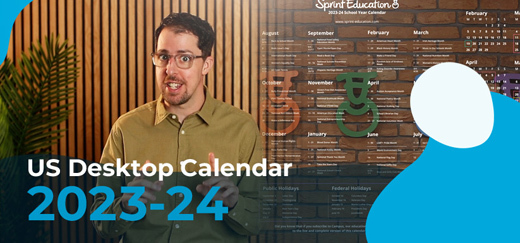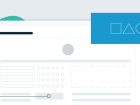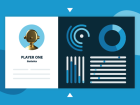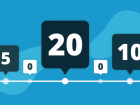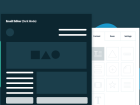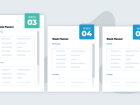Education Sales Pipelines (How to Sell More to Schools)
Education Sales Pipelines (How to Sell More to Schools)
Streamline collaboration, boost lead nurturing, and ultimately sell more to schools with this ultimate guide to building an education sales pipeline.
Streamline collaboration, boost lead nurturing, and ultimately sell more to schools with this ultimate guide to building an education sales pipeline.
Back in 2019, we started to have more conversations with our clients, not just about generating leads within the education sector, but also about how important it is for any education business to have a rock-solid education sales pipelines and strategy in place to manage the leads we (or our Campus software) was generating for them.
We soon realised that many of our clients were losing leads and sales hand over fist by not having a structured approach to their lead management and sales processes.
So, we did what we do best. We built a solution to help them!
Our client facing team sat down with our developers and designed and built an incredible, flawless sales pipeline within our Campus software for any education business to use to streamline sales processes, nurture each and every sales opportunity in the most efficient way possible, and ultimately make more sales.
Today, we’re sharing with you how they did it – and how you can build your own education sales pipeline with a little bit of help today.
Introducing… your education sales pipeline
A sales pipeline is a visual snapshot of every single sales prospect your business holds and where they sit in the purchasing journey. As teachers progress through the journey, from the first time you email them through to a successful purchase, their status and actions are plotted in the pipeline.
When incorporated as part of a CRM (such as Campus – the world’s leading education data, marketing, and sales platform for education businesses), your education sales pipeline will:
- help teams and individuals work collaboratively and meet sales targets;
- prevent a teacher or school from getting overlooked or becoming stale;
- ensure all prospects receive regular communication adjusted for their status;
- enable a more effective, all-encompassing sales strategy; and
- grow your revenue 9% faster!
So what goes into an effective pipeline – and how can you use this to boost your conversions?
An Example of a selling-to-schools sales pipeline
(Note the below is an example - your own pipeline may be quite different to this based on what you sell to schools and the steps involved in the sales process.)
Stage #1: Lead Qualification
It would be a waste of your time and budget to market to schools who you already know won’t – or can’t – buy your product or service. You may have already segmented your marketing lists to discount schools who don’t fit the audience your product is tailored towards to help you identify your marketing-qualified leads (i.e. those you’ll market to). But, to make it on your list of sales-qualified leads, they’ll need to have a defined need and budget for your offering.
Once you’ve established they’re not only an ideal customer, but have shown interest in your product such as filling in a form, clicking links in your campaigns, or replying to an email, you can safely mark them as a qualified lead ready for the next step in your sales strategy to begin.
Stage #2: Proposal Consideration
Now these teachers are hooked in and ready to be sold to, you can begin to personally market your product or service to them as part of your proposal. You’ll have opened a conversation with them – perhaps in-person during a site survey or over the phone - and put together a bespoke proposal for the school’s review. As opposed to your general emails, the proposal will give them a bespoke plan to fit their exact needs, timescales, and budget. Most purchases will need to be approved by other members of staff such as the SMT, Bursar, or Governors, so keep this audience in mind.
During this stage, give the school time to look over the budget, but make sure they don’t grow cold. Check in with them a few days after sending the proposal, and ask them if they have any questions or more thoughts about a particular part of the proposal.
Stage #3: Q&A and Negotiation
At this stage, the school will likely come back to you with said questions or concerns. With the majority of schools forever feeling the pinch of shrinking budgets, schools are forced to cut corners where they can. That may mean asking for discounts, staggered payment terms, or asking to forgo a portion of the product or service in exchange for a lower payment.
They’ll also want to be sure they’re getting the best value for their money, so prepare a bank of in-depth answers that cover your edu-centric USPs, and tweak them for each prospect’s unique situation to speed up the buying process.
These answers don’t need to be simply typed out sentences – your team should be utilising a range of case studies, testimonials, demonstrations, or other real-life examples that show how your offering addresses their concerns.
Above all, make sure your business case is always putting your USPs front and centre, as it’s likely these schools may be negotiating with a few other businesses to find the best product.
Stage #4: Decision-Making
The school will have narrowed their choices down to a few select businesses, or perhaps even decided you’re the sole company they’d like to work with. But now’s the time for the prospect to decide whether they’ll accept your sale at this time – so the hard work isn’t over yet!
As mentioned, other staff members may need to approve their purchase – sometimes even the local authority in the case of larger purchases. This can easily delay or even lose the sale if they have other projects to prioritise or aren’t convinced about the sale in the same way the initial prospect is, so support the school in any way you can with easily sharable information – or even a further discount or offer if they act quickly.
Stage #5: Deal Closing (Win or Lose)
If the teacher or school has made it to this stage, it means the deal has been decided either way: they’ve either officially confirmed to go ahead with the sale, or they’ve declined with no room for further negotiation. If it’s the former, the sale can be officially marked as ‘won’, with the latter a ‘lost’. In either situation, the deal will be officially closed, and the teacher or school will be returned to the beginning of the pipeline, ready to become a qualified lead for a second purchase or additional service.
How to manage your own edu-centric sales pipeline
The steps above should give you a detailed framework of the steps your pipeline could feature, but you’ll need to tailor them to your specific product or service, and to fit your own CRM and sales team. Follow these quick tips, and you’ll have the expert guidance on creating an unstoppable education sales pipeline!
1. Always keep your sales pipeline moving.
For every lead you close, you’ll want to, ideally, be adding at least another two into your pipeline to keep your business flourishing. This will require a strong, active, up-to-date database of teachers (you can email to the direct inboxes of over 350,000 if you use Campus)) and consistent, high-quality communication in order to keep bringing new qualified leads into your pipeline. Similarly, don’t be afraid to close leads if they’re definitely not going to continue with the sale. You can always retarget them as part of a separate campaign, and your time and effort is better spent on the leads that are steadily moving through the pipeline.
Similarly, while you should be nurturing all of your leads, if you’re strapped for time then you’ll want to focus more of your efforts onto the teachers that have proven to be the most receptive, or are statistically more likely to convert into a successful sale, rather than focusing solely on the big-value sales.
2. Maintain consistent yet careful communication with your leads.
You’ll want to avoid your leads growing cold, so never go more than a few days without communicating with them once they’re qualified. That said, be careful not to overload them with information, so make sure you have a solid reason to reach out to them. Perhaps share a new case study or introduce a new offer; anything of value tailored to the stage of the pipeline they’re currently in and designed to push them through to the next.
If you’re a Campus user, you can set tasks to automatically remind you or another member of your sales team to follow up with the right leads at the right time within your sales pipeline. You’ll never have to worry about forgotten leads going cold again, so you’ll win more sales and sell more to schools!
3. Tailor your pipeline around the education industry.
As you’re selling to schools, you’ll need to understand their operations inside out. Different types of school will have different budgets, budget releases, holiday dates, and other factors that will impact on the way you make sales. Take into account when your leads will be researching and making spends for higher-value items, and keep in mind the calendar months when they’ll likely only have the budget for smaller purchases.
If you use Campus to manage your education marketing and sales strategies, then our experts are on-hand to advise and help you design your own bespoke sales pipeline that suits your specific education business within your account.
4. Roll out a strong, certain sales strategy throughout your entire team.
There’s no purpose in welcoming hoards of qualified leads into your pipeline if you don’t then have a perfected plan with what to do with them. Avoid off-the-cuff follow-ups from various members of your sales team, and instead have a solid plan of the content and timings you’ll roll out for each stage of the pipeline, making sure your entire team is on the same page. You’ll want to conduct plenty of research and split tests and use this to influence your strategy, so make sure to track your conversion rates and user experience throughout the pipeline.
Hopefully, with the steps above, you’ll find constructing your own education pipeline a breeze. But remember the two most important things. Firstly, you’ll need to constantly update your pipeline in line with the current climate of the education sector, marketing trends, and what does and doesn’t work for your own product.
Secondly, it’s essential you have access to a growing, up-to-date database of teacher emails in order to maximise your teacher-to-qualified-lead conversion rate. Click here to find out how you can access a growing database of over 350,000 direct teacher emails today, or book a call with our education experts to find out more.
Tags
Database of Teachers
Email Marketing
Email Schools
How to Sell to Schools
How to Sell to Teachers
Marketing
Marketing & Sales Software for Sellers to Schools
Marketing Software
Marketing Strategy
Marketing to Education
Marketing to Schools
Marketing to Teachers
Schools Database
Selling to Schools
Selling to Teachers
Teacher Database
Similar Articles


A Guide to the UK’s Educational Establishment Types
Learn exactly who you're selling to with your schools marketing with our breakdown of every educational establishment across the UK.
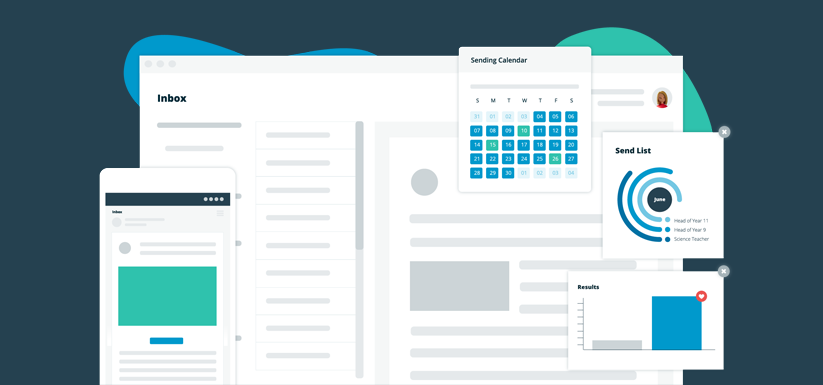

Our End-of-Term Education Marketing Results Review
At the end of another term helping businesses sell to schools, we're unveiling the incredible achievements from education marketing emails this term.


Expert marketing to K-12 support and solutions
Expert marketing to K-12 solutions
Email Principals, Teachers, and District Staff Inboxes
Email teachers and staff inboxes
Sell More to US and Global Schools and Districts
Sell more to schools and districts















